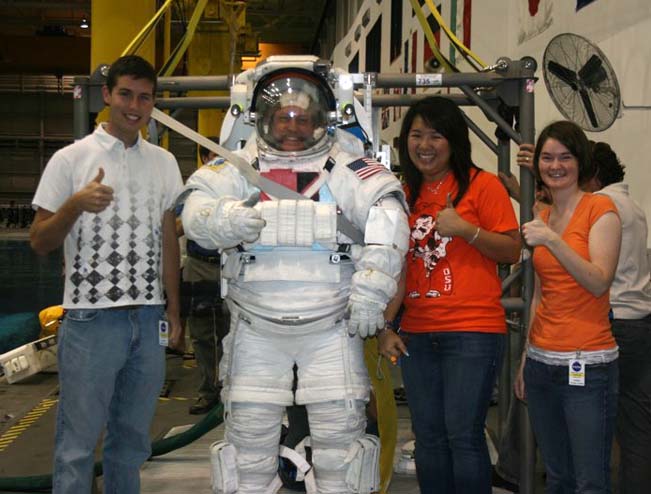OSU team visits NASA to prepare for challenge
Wednesday, November 17, 2010

A team of OSU students selected to compete in a NASA challenge got a chance to take some notes and meet astronauts at the Johnson Space Center in Houston last week.
They were getting a first look at NASA’s operational prototype for a space habitat, which is what they will be using as a basis to integrate the inflatable living quarters they’re expected to design, manufacture, and assemble for the NASA contest, according to team adviser Jamey Jacob, professor of aerospace engineering at OSU.
“The students were able to inspect the facility and discuss further research applications,” said Jacob. “They also visited NASA labs, including the Neutral Buoyancy Lab where astronauts spend time underwater training for spacewalks.”
After meeting with several astronauts, including the pilot and commander of the final space shuttle missions, mechanical and aerospace engineering student Zack Deck expressed enthusiasm. “We just shook hands with the astronaut commanding the last shuttle mission! My mind just exploded a bit.”
OSU is one of three universities (including the University of Maryland and the University of Wisconsin-Madison) selected by NASA to compete in the head to head challenge to “engage and inspire the next generation of innovative engineers and designers.” The winner of the competition will have their design used by NASA during field testing next summer, according to Jacob.
The OSU XHab team, as it’s called, includes students and faculty from the School of Mechanical and Aerospace Engineering, the School of Architecture and the College of Human and Environmental Sciences. “This is a great way for students to get to interact with other undergraduates outside of their disciplines, and not just on an academic project, but on something that has the potential to fly in space,” said Jacob.
The designs the students submit for the challenge will be usable for NASA missions to the moon, Mars and asteroids, as well as on Earth for applications such as portable operating rooms and emergency shelters.
The scope and historical nature of the project isn’t be lost on the students involved. “Working for NASA on a project for the next generation space habitat is a once in a lifetime opportunity,” said Cory Sudduth, an engineering student. “I’m very proud to have the chance to work on this.”
And as far as the visit to NASA went, Tyler Prosise summed it up succinctly. “It isn’t every day you get to meet an astronaut.”
